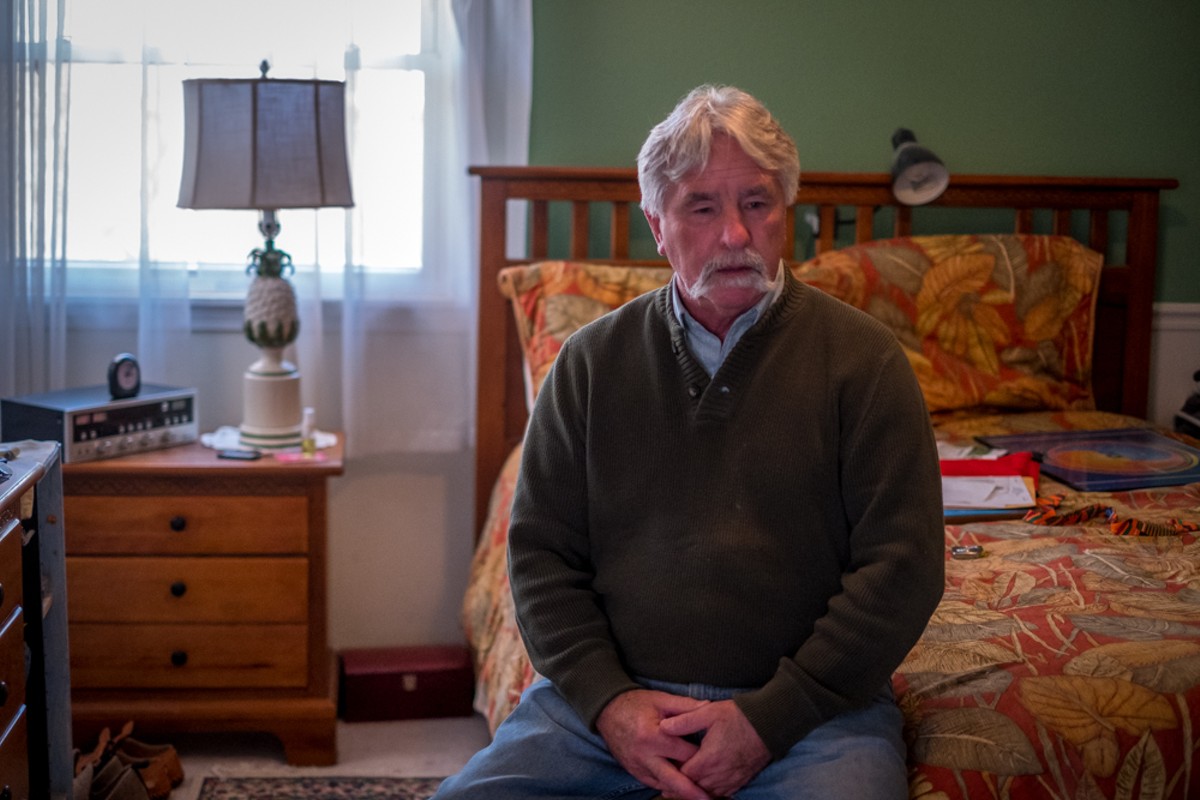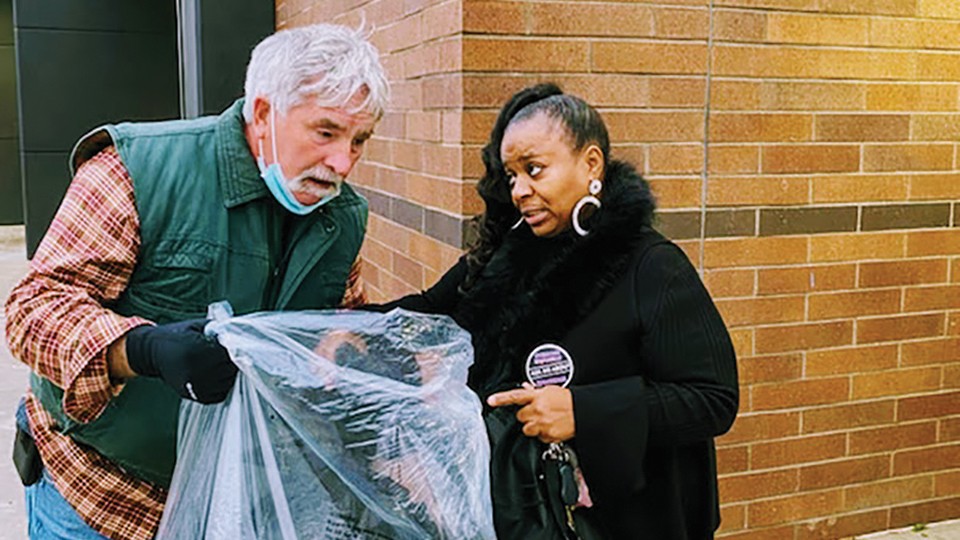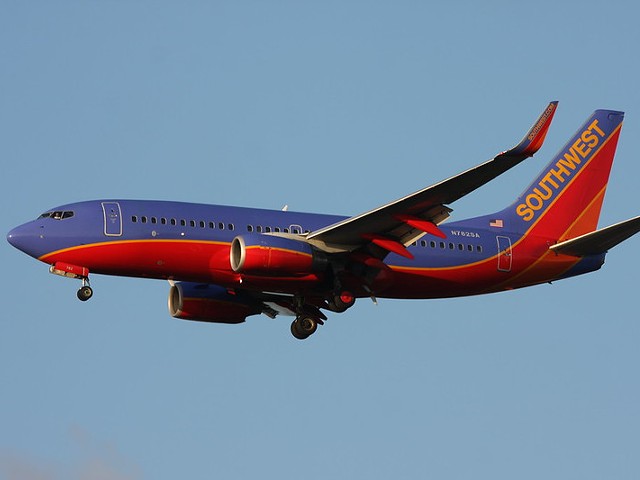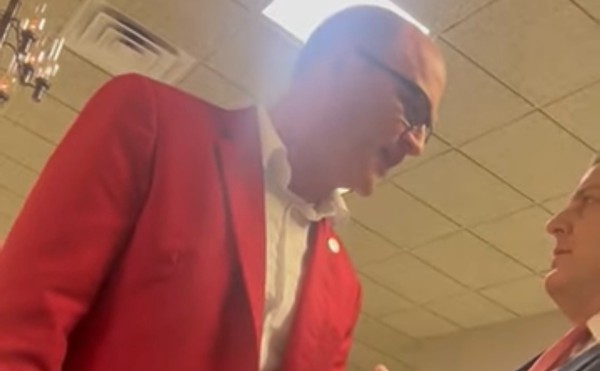A few months ago, Kevin FitzGerald was driving along Interstate 44 toward St. Louis when his iPhone buzzed.
FitzGerald picked it up.
The voice on the other end: a man in his early twenties in Ontario, Canada, who had just injected cocaine.
"I already used, and I need to talk to somebody," the caller said, as FitzGerald recalls.
So they talked.
The two strangers gabbed on and on as FitzGerald turned off the highway and looped through side streets.
"We talked politics a lot," FitzGerald says. "We're comparing education and health care. He told me he was bipolar. We talked literally for two hours. He was a wonderful young man."
FitzGerald, 68, is a volunteer operator for an international program called Never Use Alone, a rapidly growing overdose response line for people using drugs alone.
The group, which has no headquarters and exists virtually, runs a toll-free, 24/7 hotline (800-484-3731) that connects substance users from all over the United States and Canada with volunteer operators.
Volunteers such as FitzGerald stay on the line and talk to users, who provide contact and location information. Volunteers are trained to check in every two or three minutes to confirm the users are still responsive.
If the person on the other end of the line stops responding, then the volunteer immediately calls for help. If the call ends uneventfully, as it does in the vast majority of cases, then the operator destroys all contact and location information.
FitzGerald, a well-known St. Louis labor activist, contacted the Riverfront Times about Never Use Alone because he thinks it works.
"My main thing is to get the word out about this program," he says. "Because it can literally save lives."
Never Use Alone, or NUA, began only a few years ago, the brainchild of a recovering heroin user in Tennessee who was inspired by a Facebook posting. So far, the service is already showing clear promise as one of the few effective ways to turn the tide on America's raging epidemic of drug overdose deaths.
In preliminary figures released in early November, the federal Centers for Disease Control and Prevention reported that more than 100,000 Americans died of drug overdoses for the twelve-month period between May 2020 and April 2021 — a dubious all-time record that eclipsed the previous annual mark of 93,000 OD deaths.
The overdose epidemic shows no signs of abating. More than 75 percent of America's OD deaths were caused by opioids, a class of powerful painkillers that includes morphine and heroin and name-brand painkillers such as OxyContin. And more than 64,000 of the deaths were due to synthetic opioids such as fentanyl.
Fentanyl, a painkiller up to 100 times more powerful than heroin, is now pervasive both nationwide and in the St. Louis region. Because of its highly addictive — and therefore profitable — nature, fentanyl is routinely added to heroin, but is also mixed in with a wide range of other black-market drugs, including cocaine and methamphetamine as well as counterfeit versions of OxyContin and the antidepressant Xanax.
Fentanyl, unlike heroin, is a synthetic drug. It can be made anywhere.
The center of global fentanyl production is still Wuhan, China, because of the cheap and widespread availability of the precursor chemicals needed to make it. But it is increasingly manufactured in secret U.S. labs, which has made law-enforcement crackdowns much more difficult.
Many people who OD on fentanyl don't even realize they're ingesting it at the time. And if they're using the drug alone — which is common because of the stigma attached to illegal drug use and the isolation caused by the COVID-19 pandemic — then the odds of a fatal overdose skyrocket, according to FitzGerald.
Substance users whom he talks to on the NUA hotline have become especially wary, he says.
"What are you using?" FitzGerald recently asked a caller. "He goes, 'I would say heroin, but it's fentanyl.'"
A woman that FitzGerald spoke to on the NUA line in mid-November told him she had in her possession a can of Narcan, the brand name of Naloxone, a drug that can reverse an opioid overdose. She had the Narcan in case she OD'ed on the methamphetamine she was taking.
"You don't know what's in this shit anyway," FitzGerald recalls her telling him.
Never Use Alone is part of a category of tactics to fight drug abuse known as harm reduction.
As such, it belongs on a list of options that not-for-profits and government agencies are increasingly turning to as part of a multipronged strategy to stem America's record-setting epidemic of drug overdose deaths. Roots of the epidemic stretch back nearly 30 years. That's when OxyContin's maker, Purdue Pharma, launched a campaign of cutthroat profit-making by showering tens of millions of its pills upon an unsuspecting rural America, triggering the current cycle of addiction and death.
Only in recent years have courts and regulators cracked down, leading to multi-billion-dollar settlements negotiated with Purdue Pharma and other major drugmakers and distributors, such as Johnson & Johnson and McKesson. The deals will almost certainly ensure the companies will avoid ever admitting any wrongdoing — or face criminal charges — in America's deadly epidemic. But there's a clear line between the profit-making of pushing an obscene number of prescription pills on the country and the death and destruction wrought by addiction.
Looking back, the fentanyl scourge that followed seems inevitable.
The growing push for harm reduction is born out of necessity. Tactics have included distributing free Narcan and fentanyl test strips to the public, needle exchange programs and safe injection sites.
Nothing else — from stepped-up enforcement at America's southern border to Congress allocating more resources for the prosecution of drug gangs — seems to be making a dent in America's OD death crisis, which continues to grow like a metastasizing cancer.
It was only twenty years ago that about 20,000 Americans a year were dying from illegal drug use. By 2011, that number had doubled to 40,000.
By 2019, it had doubled again, to 80,000. It took only another two years for the number of OD fatalities to surpass 100,000 — a nearly 30 percent increase from the previous year, but still a much smaller figure than the true number of OD fatalities, according to some substance-abuse experts.
America's OD death rate is truly shocking when compared to the rest of the world's wealthy nations.
Poland and Turkey recorded some of the lowest rates, at 0.4 deaths per 100,000, while Norway came in at the second-highest rate, at five deaths per 100,000.
And America? It blew away the competition. It recorded an OD death rate of 21.1 deaths per 100,000, or more than four times Norway's.
Jenny Armbruster, the deputy executive director of PreventEd, one of the St. Louis region's leading drug education groups, called Never Use Alone "a good strategy. We always encourage people not to use alone."
Armbruster described NUA as an important option to prevent fatal overdoses for people who "don't have someone perhaps in their life that they're able to use around or [are] isolated for a variety of reasons."
The Drug Enforcement Administration has made cracking down on fentanyl makers and traffickers a top priority, according to Armbruster.
But like so many things in the drug economy, "it's like pushing down on one part of a balloon," she says. "It will move to another area."
Meanwhile, law enforcement and drug education professionals are girding for the next big thing in lethal drugs.
Is it something called "benzo dope"?
Canadian physicians are already warning that benzo dope, a highly dangerous synthetic street drug, is on the rise in Canada. A mixture of fentanyl and black-market benzodiazepines, a class of tranquilizers, benzo dope leaves drug users even more prone to fatal overdoses than fentanyl alone.
Benzo dope's deadliness stems from the fact that Narcan is not effective against it. Last year, forensic drug experts in the Canadian province of British Columbia found that one in six fentanyl deals were cut with benzodiazepines — a class of tranquilizer that had not typically been found mixed into opioids — compared to 5 percent last January and zero before 2019.
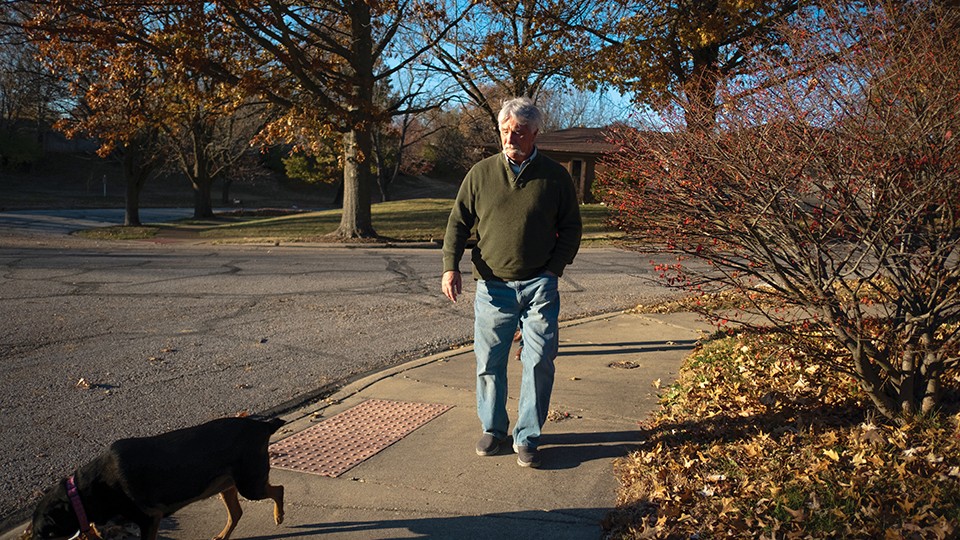
Harm reduction is by its nature a controversial topic within and outside recovery communities.
Are you enabling substance users by giving them life-saving Narcan to reverse the effects of an overdose?
Are you encouraging users to stay on drugs, steadily destroying their lives and the families who love them, by giving them a safety net through a program such as Never Use Alone?
For FitzGerald, such questions are moot when lives are literally riding on the line.
FitzGerald is a retired member of Insulators Local 1. He knows firsthand how widespread drug use is among blue-collar workers. Some of his friends, or their children, have died from drug overdoses.
So, among a myriad of other do-gooder pursuits, FitzGerald spends a lot of his time handing out free Narcan, especially at local picket lines and other trade-union-sponsored events.
"Enabling?" he says about Narcan. "This is used when someone is dying."
And yet the question of whether his actions are enabling substance abusers keeps coming back to him, a constant refrain from both his union buddies and the public at large — principally because of ignorance.
An acquaintance of his who's been in recovery for two decades from alcoholism recently revealed her disapproval of his Narcan distribution efforts, FitzGerald says.
"She said that's enabling," FitzGerald says. "Somebody's literally dying."
Mike Brown, a recovering heroin user who started NUA in the fall of 2019, pushes back against the idea that his program enables substance users.
"We get that a lot," says Brown, who makes his home in southeastern Tennessee. "But I don't think it is, because the only thing we're helping that caller avoid is death."
Brown makes the point that if NUA was taken out of the picture, more people would die. And how would that make anything better?
"So I don't think we're enabling anything," Brown says. "We're enabling people to stay alive long enough to find a path to recovery. But no, I don't think it's enabling at all. The only consequence we're helping them avoid is death."
Jay Moore, an NUA volunteer operator in Oklahoma City, says harm-reduction programs should be supported.
"You might as well choose the side of public health ... and just compassion, really, and meet people where they're at," she says.
In recent years, city, state and federal governments have been increasingly sympathetic toward harm-reduction strategies as they try to get the OD drug epidemic under control.
The shift toward harm reduction is a response to the failures of the "Just Say No" philosophy driving countless DARE school programs going back to the 1990s, Brown says.
"We're realizing now — pardon my French — that's bullshit," he says. "The whole war on drugs has taught society that drug users are bad people. ... I think we're finally turning the corner. Society is seeing that this isn't what they told us it was. The whole war on drugs was started with racism. That's what it is. I think America is waking up."
Case in point: the nearly $2 trillion American Rescue Plan, which was signed into law in March of this year. It allocates hundreds of billions of dollars for big-ticket projects aimed at reviving America's economy from the damage caused by the COVID-19 pandemic.
Among the projects in the stimulus plan is $30 million for a range of harm-reduction services nationwide.
This is the first time the federal government has provided funding for such services. The legislation directs grants to be provided "to support community-based overdose prevention programs, syringe services programs and other harm reduction services."
Chad Sabora, the cofounder and executive director of the Missouri Network for Opiate Reform and Recovery, in St. Louis, is one of the region's leading voices for harm reduction.
Sabora harbors doubts that, in Missouri at least, the federal dollars earmarked for harm-reduction services will truly reach them.
"But that's going to be a pass-through to the states," Sabora says of the $30 million federal allocation. "And they can decide what harm reduction is."
Sabora notes that he has tried for years to set up legal needle exchanges and safe injection sites in the St. Louis region — programs that have long been in place in such European nations as Switzerland, the Netherlands and Portugal, with decades of well-documented evidence to back up their safety and efficacy.
But here in Missouri, local governments and the state have thwarted those harm-reduction efforts.
"We don't have the infrastructures nor the interventions to properly spend that money to be most effective," Sabora says.
The idea behind Never Use Alone took shape in the late summer of 2019. That's when a member of a Facebook group for substance users posted that a friend had died the night before because he had used drugs alone.
As a tribute to the lost friend, the poster made an offer: "Here's my phone number. If any of you guys use today, call me and I'll sit on the phone with you."
Brown, a member of the group, saw the posting and experienced an epiphany of sorts.
"Why can't we do this on a large scale?" Brown recalls thinking. "So I looked at it, and I was surprised there was nothing like this already. And it's such a simple idea. I couldn't believe nobody did it before me. Never Use Alone was born three or four days later."
NUA has spread all across America in the years since. The program has set up dedicated phone lines in New York City and New England. Satellite programs have sprung up in Canada, the United Kingdom and Australia.
So far, NUA has recorded more than 5,000 calls and made 31 calls for ambulances.
"So the large majority of our calls end safely," Brown says. "Thirty-one times they called an ambulance, and 31 times the caller survived."
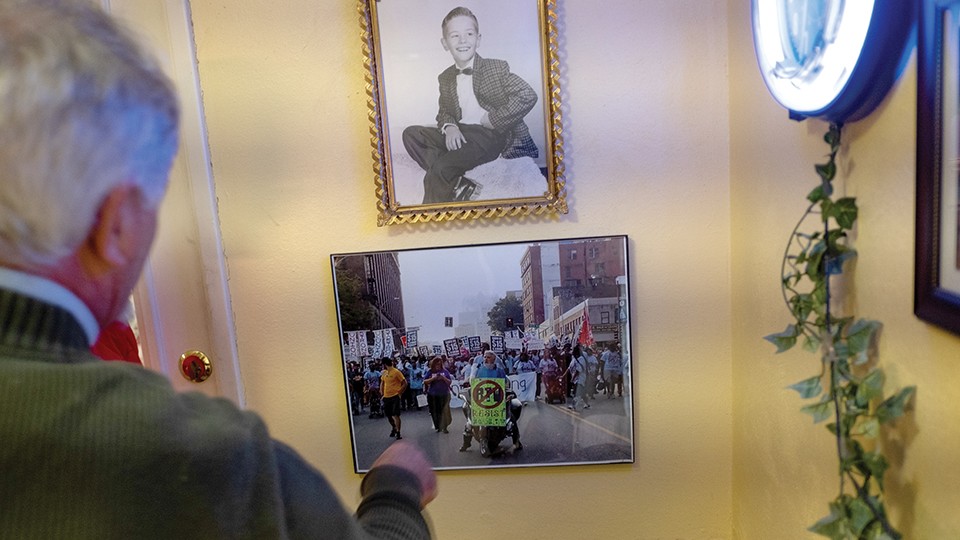
Volunteer operators are trained not to bring up the topic of getting into treatment.
"We never mention treatment unless the caller does," Brown says. "Myself, if I had called a line like this [when still using heroin] and the operator was chatting me about quitting and trying to push me to go into treatment, I'm not going to call back. It takes a lot to get that trust. It would totally destroy it if we then start pushing them into recovery. Our purpose is to keep them alive. It's not our place to decide when they quit."
NUA prefers to recruit volunteers with substance-abuse histories because "they can understand me. It's just easier to relate to somebody who's been there, done that," Brown says.
The Never Use Alone website states that the organization is not accepting volunteer applications right now.
The website also notes that serving as a volunteer "is a high stress position, and can be traumatic at times. While most calls end safely, you will likely have a call where the caller is overdosing, and all you can do is call for help, and then listen while you wait for the ambulance to arrive. Those calls ARE TRAUMATIC! If you cannot handle high stress, traumatic situations, this probably isn't the position for you."
Moore, the Oklahoma volunteer, says the stressful nature of the calls comes from the serious issues that callers present.
"We're both an overdose prevention line and a suicide prevention line at times," she says.
Moore notes the recent experiences of a volunteer operator who himself was fresh out of drug rehab and newly sober.
"And you want to make a difference," Moore says. "But we're always concerned [that a call] will trigger a relapse" for the operator.
The newly sober volunteer received a call from a substance user who, after a few minutes on the line, passed out.
The operator got ahold of the caller's mother, with whom he coached through the process of administering Narcan and then rescue breaths "until EMS arrived," Moore says. "And I know that took a big toll on that person."
The cold, the cold.
The icy November wind is dagger-like and unrelenting; it cuts to the bone on this late Friday afternoon outside the QuikTrip at the corner of Dunn Road and Interstate 270 in north St. Louis County.
FitzGerald and his new friend, the Rev. Pamela Paul, who is known universally as Pastor Pam, seem undaunted.
Pastor Pam, the pastor of a north St. Louis church, and FitzGerald are here on a mission: to hand boxes of Narcan to everyone they see coming in and out of this busy service station and food market.
The responses that FitzGerald and Pastor Pam get are pretty typical. Some people appear indifferent and deny they know anyone with a drug problem. Others seem like they genuinely care, a few opening up about drug issues among friends and family members.
A tall man smoking from a vape pen approaches the QuikTrip door when Pastor Pam accosts him.
"This is Narcan," she says. "You give this to a person who overdoses."
The man looks at her quizzically.
"The Good Samaritan Act will protect you," she says, alluding to the state law that immunizes people from prosecution who call 911 to report drug overdoses.
"And you just saved somebody's life," Pastor Pam concludes, her face lighting up in a bright smile. "That's what you want, right?"
The man nods, takes the Narcan and continues through the Quik-Trip door.
Pastor Pam, who's been roaming the St. Louis streets for years handing out Narcan, is an old hand at this.
"That's the key, awareness," she says, noting that a lot of people still refuse to accept her Narcan offerings. "People aren't rejecting you when they're rejecting it."
There is a growing consensus among social scientists, journalists and other people who study America's overdose crisis for a living that one of the overarching reasons driving it is the fact that Americans are feeling increasingly lonely and alienated. A 2019 poll of American adults, for instance, found that more than one in five reported they had no friends at all.
This loneliness is also being fueled by declining religious involvement, falling marriage rates and a growing "gig" economy that renders obsolete such longstanding notions as a stable workplace and a set of coworkers. And then there is America's obsession with what one journalist has called "radical individualism," especially among men, who are taught early on that seeking help is a sign of weakness.
So if radical individualism helps drive the overdose crisis, then what FitzGerald and Pastor Pam are practicing might hold the key to reversing it.
Call it radical compassion — going out of your way to save the lives of total strangers.
Such an impulse comes naturally to FitzGerald, a familiar figure for decades in union halls, picket lines, pro-union rallies in Jefferson City and various protest marches.
In his Ballwin home, by the door to the garage, there is a framed photo of FitzGerald on his BMW motorcycle, leading a march in downtown St. Louis against Missouri Republicans' efforts to pass a union-busting right-to-work law.
Fitzgerald laughs as he shows another picture of himself dressed up as a Tyrannosaurus rex and balanced perilously atop a giant crane looming over the St. Louis skyline to protest an earlier effort to pass right-to-work.
"I was so lucky I didn't get arrested that day," he says.
Like so many people who've devoted their lives to helping others, FitzGerald has experienced more than his share of tragedy and suffering.
Two decades ago, FitzGerald's wife Moni, suffering from depression, took her own life. And today FitzGerald continues to worry about a person very close to him — a person with a history of mental illness and drug abuse but whose identity he wishes to keep private — who disappears from his life for long stretches of time.
When you spend a big part of your waking life trying to make the world a better place, then you know going into it that you will enjoy some occasional wins, but also a hell of a lot of disappointment. That's just baked into the pie.
For instance, FitzGerald lights up like a kid at Christmas when he recounts the long fight to pass Medicaid expansion in Missouri. After repeated efforts, Missouri voters finally approved it a year ago, but obstinate Republican lawmakers delayed its implementation until October of this year.
"But we did it," FitzGerald says. "We got it passed."
But FitzGerald concedes that much of his activism has ended up in defeat as conservative Republicans tighten their grip on state government.
"It does get depressing sometimes," he admits.
America was literally founded on the evolving idea that all people had a right to "the pursuit of happiness." In an irony for the ages, America circa 2021 is jam-packed with unhappy, lonely, disappointed, stressed-out, resentful and alienated people.
The COVID-19 pandemic, with its seemingly unending toll of death, serious illness, and economic and social disruptions, has made it worse in many ways. But for years, the United States has seen the same factors that experts have long cited as contributors to dangerous addiction in individuals play out across society at large in increasingly public ways.
Witness the January 6 insurrection at the Capitol, screaming matches at school-board meetings over facemasks and the attraction many millions of Americans harbor toward right-wing authoritarianism and conspiracy cults like QAnon.
The event has already vanished from headlines, but it still bears repeating that hundreds of QAnon true believers gathered in Dallas on November 22 for the prophesized return from the dead of President John F. Kennedy and his son JFK Jr.
It may have been a pursuit, but it did not end in happiness.
In a recent article for the online journal The Week titled "Why are Americans Drugging Themselves to Death," the journalist Damon Linker notes a 2015 study that found 32 million Americans, or one in seven adults, dealt with a serious alcohol problem the previous year, while nearly one-third of Americans would show signs of a serious alcohol-use disorder at some point in their lives.
Linker also points out that America leads the world in per-capita consumption of prescription medications for anxiety and depression, with 13 percent of adults relying on them even before the pandemic caused new spikes.
Linker writes that America is experiencing a "spiritual crisis" because "it seems to involve such comprehensive issues, many of them wrapped up with existential questions of elemental happiness. Our country's civil religion tells us America is the greatest nation in the world because we're left free to pursue happiness however we wish. But who among us really knows how to be happy?"
Whatever the cause, Linker concludes, "Americans appear to be losing their way in the world, anxiously pursuing a happiness that eludes them, and ending up drawn to toxic chemical and ideological substitutes for relief from the misery of a disconnected, purposeless existence. ... Which might just be another way of saying that radical individualism is hard — and quite possibly a burden too heavy for many of us to bear."
Linker paints a bleak portrait of today's America — one that is, well, beyond argument to anyone who's been paying attention. America's fraught political debates are as hard to ignore as a car alarm blaring late at night.
Democrats fuss and fret that democracy is on a death watch because the Republican Party is now an authoritarian personality cult determined to kill it. They fear the January 6 organizers will escape justice.
Meanwhile, Republican leaders claim the 2020 election was stolen and that they're going to make sure it won't happen again. And once-innocuous things like facemasks and stupid phrases like "Let's go, Brandon" are suddenly political flashpoints and fierce markers of tribal identity.
But there is hope, always hope.
And you feel it when you hang out with FitzGerald and Pastor Pam.
They've driven to a small north-county food market/liquor store a few miles from the QuikTrip. The market is rumored to be a place where substance users come to buy and use drugs.
The pair take up positions near the market's entrance. Late afternoon has given way to dusk, and then to nightfall. They've given away almost all their Narcan boxes.
Then a young man named Greg approaches them. He asks for their last Narcan box.
Greg says his father got hooked on opioids because of a legal prescription.
"He took them for the pain," Greg says. "Now he's abusing them. There are times he might OD."
FitzGerald gives him the Narcan and grins, looking pleased as Greg disappears into the night.
Pastor Pam shares the look. The world isn't going to change if a stranger named Greg can save his dad's life, but it's something.
"So if we can keep doing that, one by one," FitzGerald says, "it's a ripple effect. And it can get bigger and bigger."
Mike Fitzgerald is a freelance journalist. You can follow him on Twitter at @MikeWearAMask.

